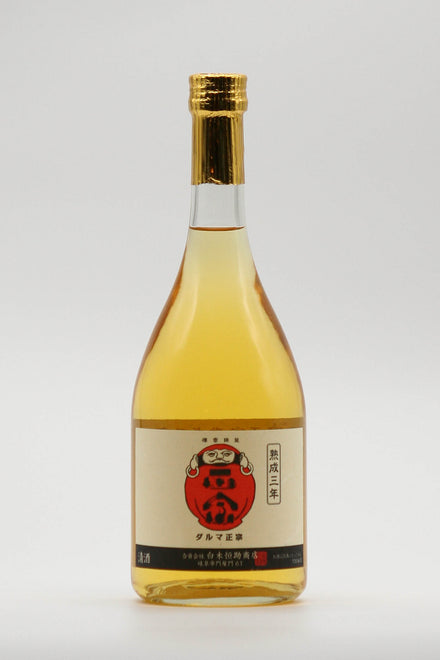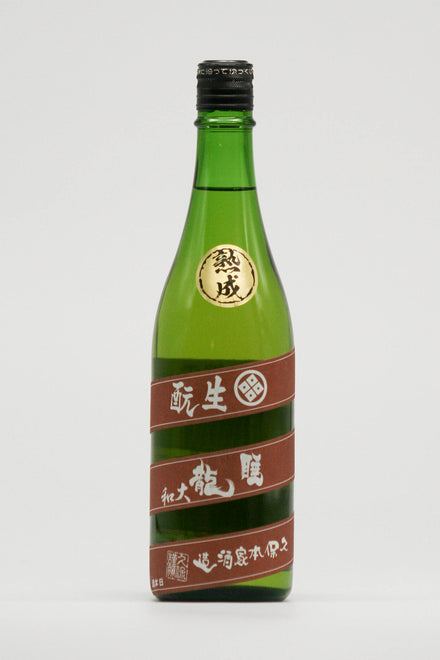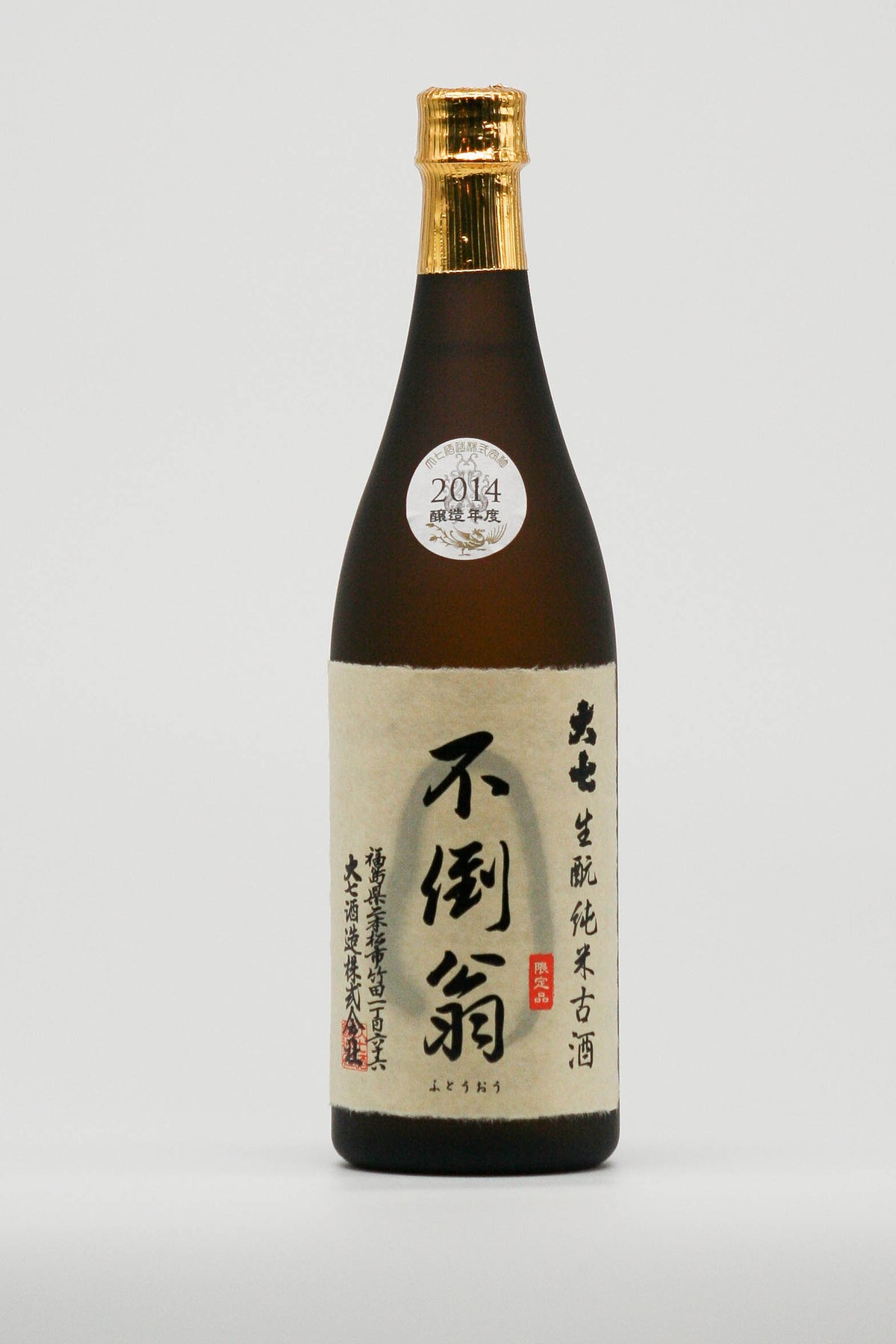
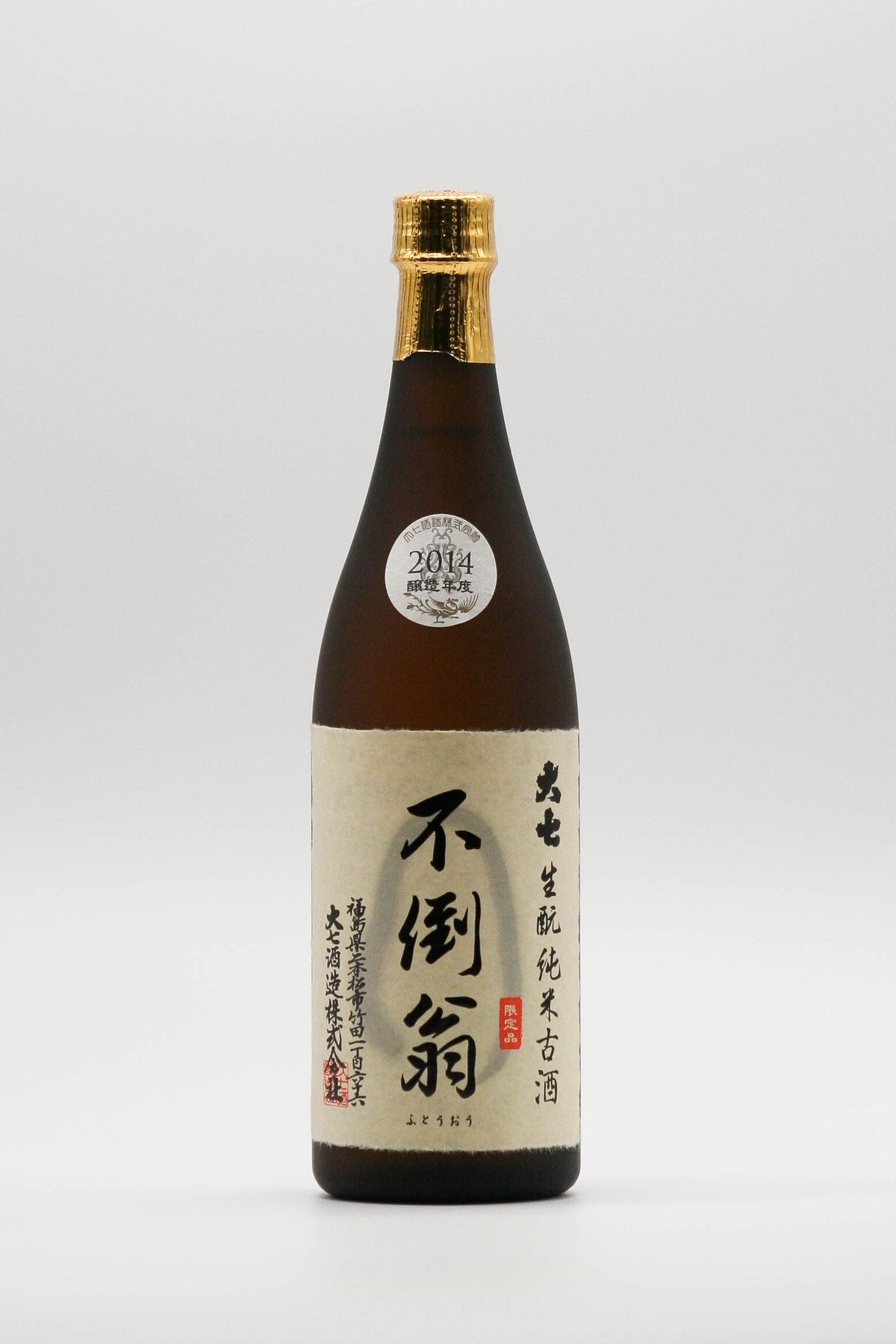
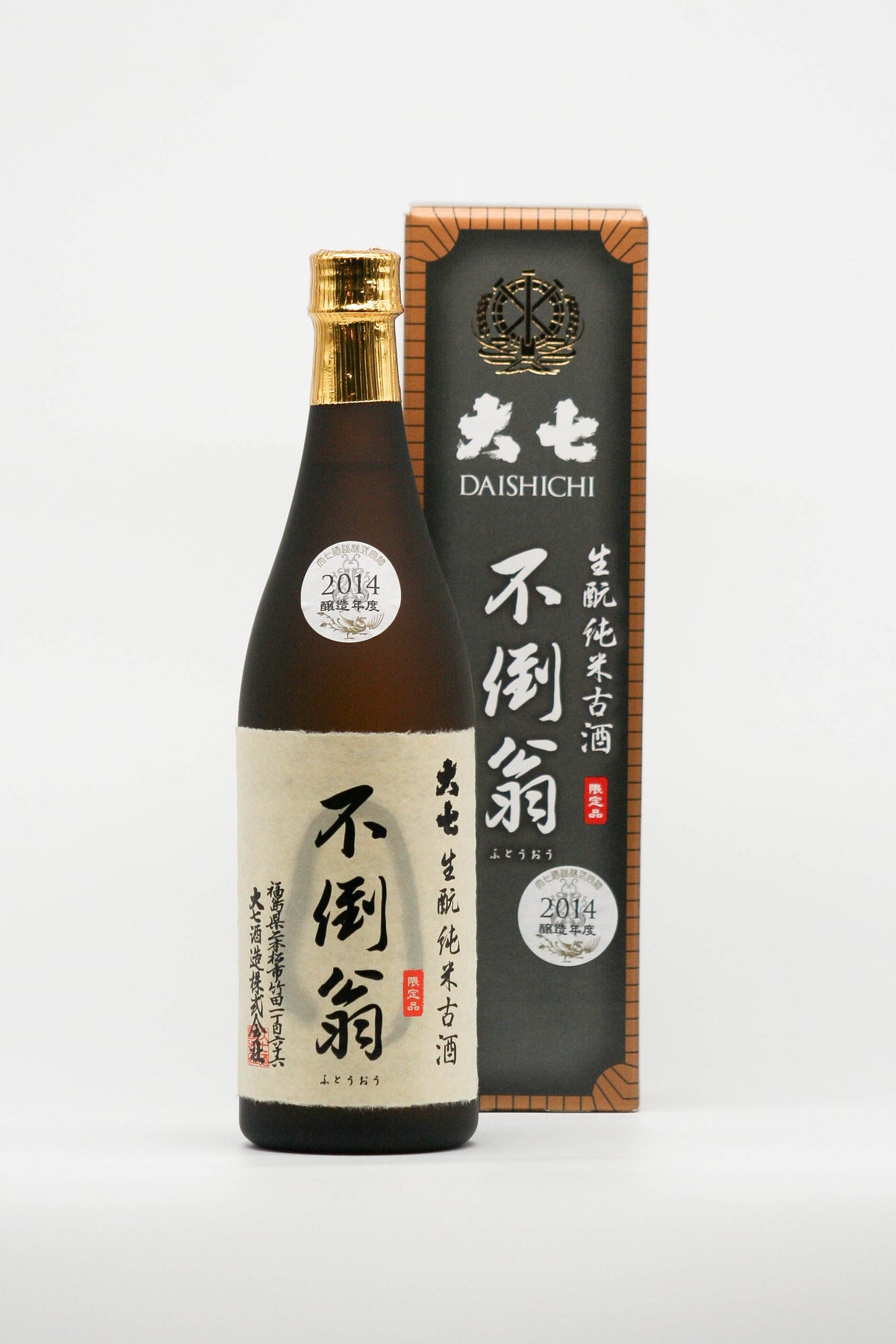
This Kimoto Junmaishu is brewed in just one tank every year and stored until it matures to a bright golden color.
Daishichi Futouou 2014
| Vintage | 2014 |
| Years aged | 8-9 years |
- 2010 or later
- All Products
- Less than 5,000 yen
- Light Yellow/Green
- More attractive when warmed
- Throughout the meal
- 5-9 years
- Brewer:
- Alcohol:15 degrees
- Volume:720ml
Couldn't load pickup availability
[ Drinking alcohol under the age of 20 is prohibited by law. ]
This is an umami-driven sake made by slowly maturing limited-edition Junmaishu brewed using the ancient Kimoto starter method.
It perfectly matches various cuisines, creating a harmonious food and matured sake pairing experience.
Recommended dishes include sesame-flavored shabu shabu, fried chicken, and dishes using oyster sauce.
Message from the brewery:
"More than ten years have passed since the Great East Japan Earthquake. Hoping for the region's recovery, we named the sake Futo-o, a proverbial expression, also sometimes called Okiagarikoboshi, of the survival spirit that no matter how many times you fall, you can get back up again."
- about
-
Type 生酛造り純米古酒 Rice polishing ratio Super flat polished rice 69% Yeast type Association No. 7 Ingredients/raw materials Rice/rice koji Rice type Gohyakumangoku etc. Origin of rice Toyama prefecture, Fukushima prefecture Toji(Brew Master) Takanobu Sato (Nanbu Chief Brewer) Assemblage 無
- Recommended occasions/temperature
-
- How to store
-
- Delivery dates and charges
-
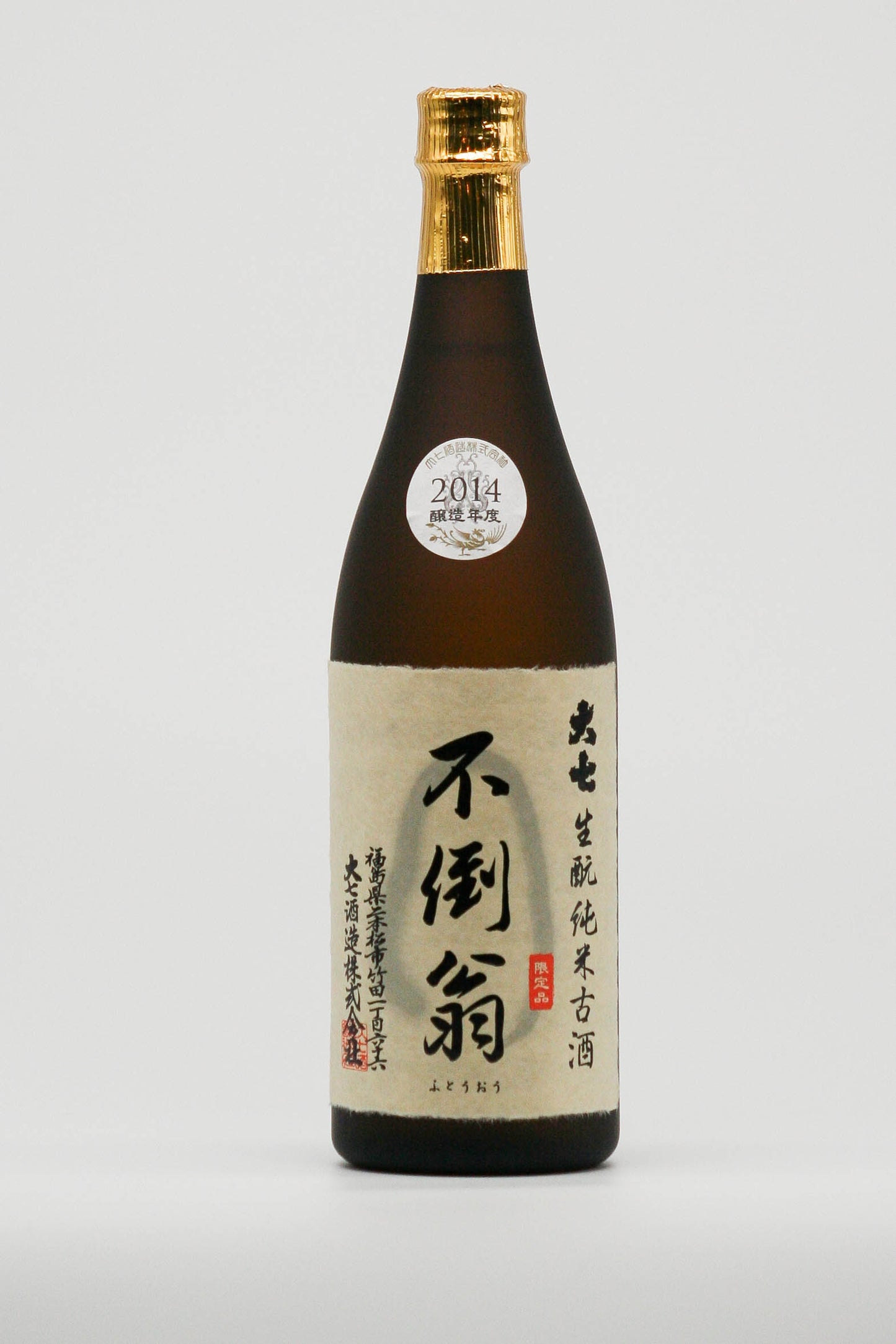
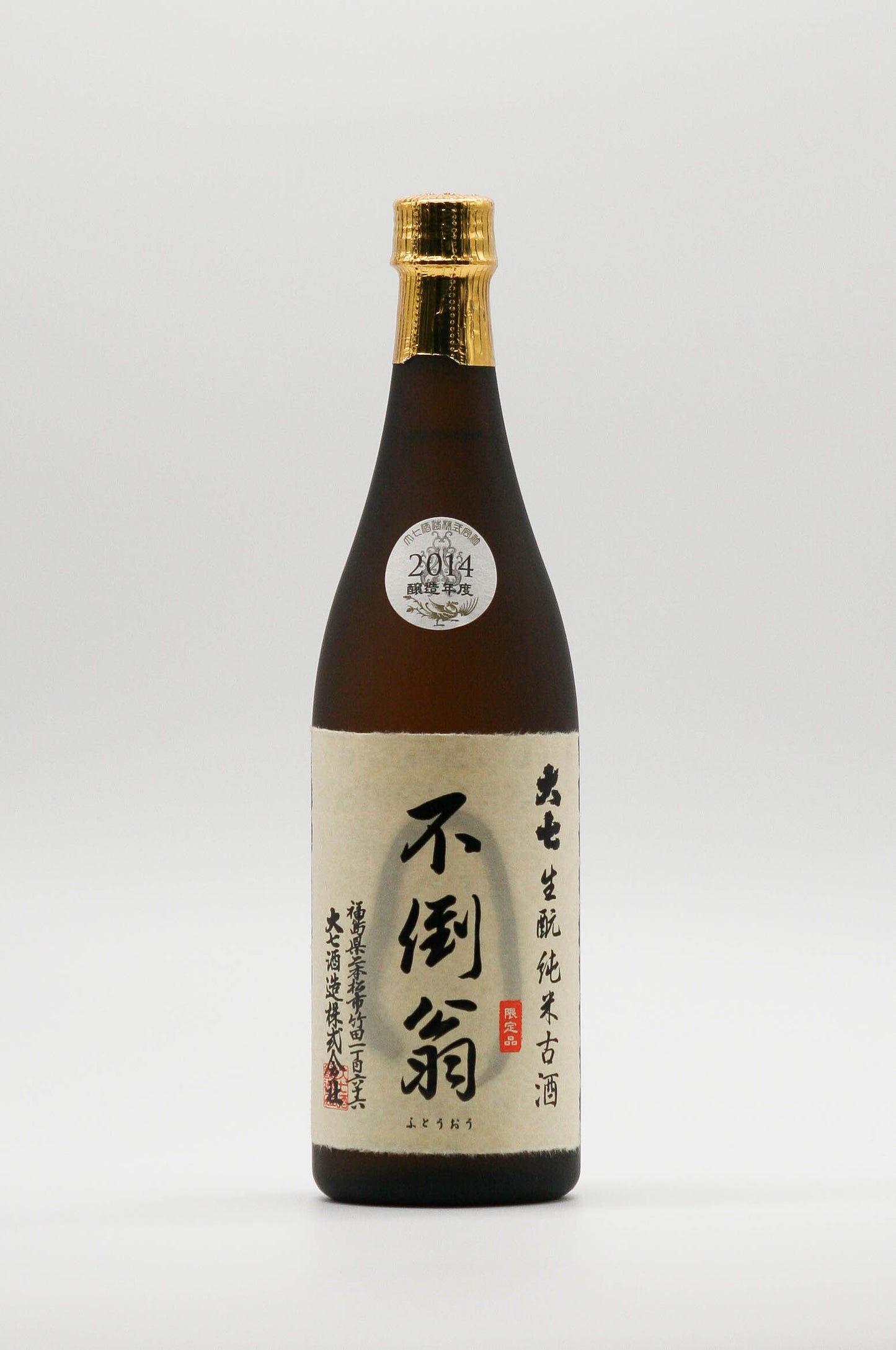
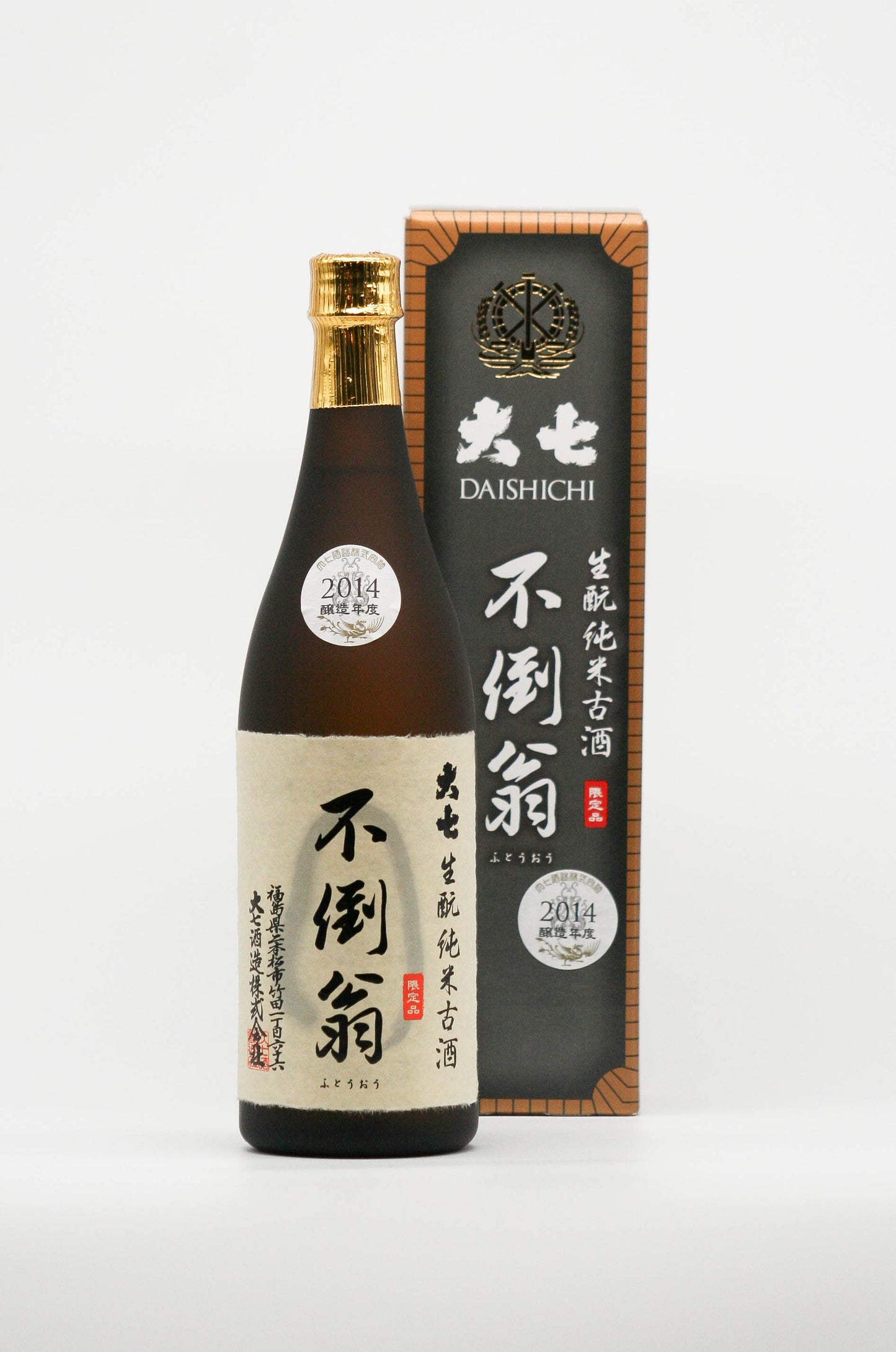
Tasting comments
-
Nobuhiro Ueno
(Mature and Warm Bar Master / Toki SAKE Association Executive Director)(chilled)
Gentle aroma of rice fat and cheese-like milk fat. The taste is gentle and pleasant in the mouth. I recommend warming it up a little to make it more filling and enjoy it with your meal. A gentle taste that you can keep drinking forever by having it with food.
(warm)
It has a gentle aged aroma like caramel, and a quick sourness appears in the mouth, followed by a gentle sweetness that settles the palate. It's a drink whose characteristics are relatively easy to understand, and it's sharp and leaves a lasting impression. I want to let it dry and enjoy it even more after purchasing it. -
Hidekazu Ishiwata
(Former National Tax Bureau Chief Appraiser)(chilled)
Pale yellow. Slightly stuffy aroma.
The aroma is gentle and gentle.
It has a smooth richness and is finished with acid. Solid flavor.
(warm)
The top is a gentle mature aroma.
Accented with caramel nuances, sweet undertones, and a slightly bitter taste.
The soft acidity of lactic acid lingers as a slight lingering aftertaste, with the umami and pressiness of the rice, and a nice sharpness.
-
Akiko Toda
(Director of ITTEKI, Japan Sake and Meat Research Institute)(chilled)
A sweet and warm aroma reminiscent of roasted sweet potatoes, tortoiseshell candy, and rice pudding.
Thick and smooth texture. However, when you put it in your mouth, it is an interesting sake with a gentle sweetness and a refreshing feeling.
(warm)
A calming aroma reminiscent of trees and a nuance similar to bonito stock.
It has a strong sweetness, but the acidity balances it out so it's not greasy, and the umami lingers for a long time. At 45℃, it will be gentle and sweet, and at 55℃, it will have a more soupy flavor. I would like to pair it with green seaweed bean paste tofu, Kyoto-style oden, etc.
-
Yuji Yamauchi
(Yushima Tenjinshita Sushi Hatsu 4th generation / 1st JSA SAKE DIPLOMA competition winner)(chilled)
A scent reminiscent of cheese, with a gentle and soothing impression.
It has the potential to further open up when exposed to air. It's gentle, and even when warmed, the flavor comes out like a flower opening.
(warm)
It has a creamy dashi aroma. A pleasant balance of sweetness and gentle flavor, the depth of the soup stock creates a balance, and the warmness brings out the goodness. I would like to pair it with Kobujime or grilled bamboo shoots.
At 55℃, acidity and refreshing feeling appear. It includes images that are more closely related to cooking.
Brewer
- Choosing a selection results in a full page refresh.
- Opens in a new window.

